Il y a quelque chose d'hypnotique dans le spectacle des koïs nageant dans une eau limpide : leurs couleurs changent au gré du soleil, leurs mouvements sont à la fois puissants et gracieux. Pour un particulier, créer un bassin à koïs n'est pas qu'une question d'esthétique ; c'est une question d'équilibre. Un bassin à koïs est un organisme vivant qui exige une harmonie entre l'eau, l'oxygène, la température et l'entretien. Derrière chaque belle photo de bassin se cache un système bien conçu, où filtration, profondeur et circulation de l'eau fonctionnent de concert pour assurer la bonne santé de ces magnifiques poissons.
Que vous créiez votre premier bassin ou que vous en amélioriez un existant, il est essentiel de bien comprendre son entretien. Ce guide vous expliquera en détail les besoins réels des koïs : leurs comportements, la filtration, les soins saisonniers et les idées reçues qui induisent souvent en erreur les nouveaux propriétaires.
Faits relatifs au comportement des carpes koï
Les carpes koï sont bien plus que de simples poissons d'ornement : ce sont des animaux sociaux, intelligents et profondément sensibles à leur environnement. Observer leur comportement permet d'en apprendre beaucoup sur leur santé et leur bien-être.

Créatures sociales
Les koïs s'épanouissent en groupe et nagent généralement ensemble en suivant des trajectoires synchronisées. La solitude peut engendrer du stress, entraînant une baisse d'appétit et une diminution de l'intensité de leurs couleurs. C'est pourquoi il est conseillé de maintenir trois à cinq koïs dans un même bassin.
Curiosité et routine
Les carpes koï sont des créatures curieuses. Elles explorent leur environnement, suivent votre ombre et apprennent même à reconnaître les signaux alimentaires. C'est ce qui les rend idéales pour les bassins interactifs où l'on peut les nourrir à la main ou les observer de près.
Sensibilité à la température
Ce sont des poissons à sang froid, et leur métabolisme varie donc en fonction de la température de l'eau. Les carpes koï sont actives durant les mois chauds et ont besoin de plus de nourriture et d'oxygène. Durant les mois plus frais, elles sont moins actives et économisent leur énergie, leur digestion étant ralentie.
Coexistence pacifique
Contrairement à la plupart des poissons de bassin, les koïs ne sont pas violents et se battent rarement. Ils cohabitent avec les poissons rouges et autres petits poissons d'ornement si le bassin est grand et bien filtré.
L'activité des koïs est directement liée aux conditions que vous créez. Un bassin bien aéré et équilibré favorise leur activité, tandis que de mauvaises conditions entraînent rapidement léthargie ou maladie.
Taille, profondeur et oxygène de l'étang
La conception d'un bassin à koïs réussi commence par le choix de sa taille et l'équilibre de l'eau. Les koïs grandissent rapidement (jusqu'à 60 cm, voire plus) et peuvent vivre plusieurs décennies si elles disposent de suffisamment d'espace.

Taille de l'étang
Un volume minimum de 1 000 gallons est recommandé pour un petit élevage de koïs, mais plus le volume est important, mieux c'est. La gamme d'accessoires pour bassins Poposoap, comme leurs aérateurs solaires et leurs fontaines flottantes, est conçue pour des bassins de 300 à plus de 600 gallons, ce qui permet d'adapter facilement votre aménagement par étapes.
Profondeur
Les carpes koï ont besoin d'une profondeur d'eau d'au moins 90 cm pour réguler la température et être hors de portée des prédateurs. Les bassins peu profonds se réchauffent en été et gèlent trop vite en hiver, ce qui stresse ou tue les poissons. Une eau plus profonde les isole également des variations de température.
Oxygène et aération
Les carpes koï sont extrêmement dépendantes de l'oxygène dissous. Le manque d'oxygène est l'une des causes les plus fréquentes de stress chez les poissons de bassin. L'eau en mouvement permet d'oxygéner l'eau tout en mélangeant les nutriments et en évitant sa stagnation.
Ici, une fontaine flottante Poposoap ou un aérateur solaire peuvent s'avérer indispensables. Le jet de la fontaine augmente le contact de l'eau avec l'air, et les aérateurs solaires oxygènent l'eau en continu sans électricité. Cela profite non seulement aux carpes koï, mais aussi aux bactéries bénéfiques essentielles à la qualité de l'eau.
En résumé, un bassin correctement oxygéné et de taille appropriée n'est pas un luxe, c'est une nécessité biologique pour que les koï puissent vivre longtemps et en bonne santé.
Filtration et alimentation
Une eau claire n'est pas qu'une question d'esthétique : elle est le fruit d'une filtration adéquate et d'une alimentation équilibrée. Ces deux éléments sont essentiels à l'entretien à long terme d'un bassin à koïs.
Filtration
Chaque bassin à carpes koï nécessite une filtration mécanique et biologique. Les filtres mécaniques éliminent les débris et les restes de nourriture, tandis que les filtres biologiques favorisent le développement de bactéries bénéfiques qui transforment l'ammoniaque, un gaz nocif, en substances relativement inoffensives.
Les systèmes de filtration solaire pour bassins Poposoap remplissent ces deux fonctions avec une installation minimale. Ils combinent des pompes à eau performantes, des médias filtrants multicouches et un fonctionnement à l'énergie solaire : la solution idéale pour maintenir une eau pure tout en réduisant votre empreinte carbone. Pour une utilisation nocturne ou pour les grands bassins, l'association du filtre avec les éclairages pour bassins Poposoap crée une ambiance lumineuse agréable sans effrayer les poissons.
Alimentation
Les carpes koï sont opportunistes et omnivores. Elles se nourrissent de plantes, d'algues et d'insectes, mais nécessitent également une alimentation spécifique de haute qualité pour bien grandir et conserver leur couleur.
- Nourrir 2 à 3 fois par jour pendant les mois les plus chauds lorsque la température de l'eau est supérieure à 60°F (15°C).
- Ne suralimentez pas vos poissons, car les restes de nourriture se décomposent en ammoniac, une toxine mortelle pour eux.
- Durant les mois les plus froids, en dessous de 10 °C (50 °F), optez pour une alimentation à base de germe de blé ou sautez les repas, car la digestion est plus lente.
L'observation du comportement alimentaire permet également de détecter précocement les problèmes de santé ; un désintérêt soudain pour la nourriture peut être le signe d'une mauvaise qualité de l'eau ou d'une maladie.

Soins saisonniers
Un bassin à carpes koï traverse des cycles saisonniers, et la connaissance de ces cycles est importante pour maintenir l'équilibre.
Printemps
Avec la hausse des températures, les koïs sont plus actifs. C'est le moment idéal pour remettre en marche le système de filtration, éliminer les débris et effectuer des changements d'eau partiels. Pensez à installer ou à déplacer votre filtre solaire Poposoap pour profiter du débit accru grâce à l'ensoleillement plus fort.
Été
Lorsque l'eau se réchauffe, la teneur en oxygène diminue et l'aération du bassin devient essentielle. Une fontaine flottante assurera une circulation continue de l'eau, tandis que des plantes ombragées ou des couvertures flottantes empêcheront l'eau de surchauffer. Il est nécessaire de contrôler régulièrement le pH et le taux de nitrates.
Automne
Les feuilles mortes peuvent obstruer les filtres et contribuer à l'accumulation de débris organiques. Installez un filet autour du bassin pour réduire les déchets et diminuez progressivement la quantité de nourriture distribuée. C'est également le moment idéal pour vérifier les pompes, les filtres et le matériel solaire avant l'arrivée de l'hiver.
Hiver
Les carpes koï entrent dans un état de semi-hibernation appelé torpeur. Évitez que le bassin ne gèle complètement ; laissez une petite partie libre pour permettre les échanges gazeux grâce à un aérateur ou une fontaine. Les pompes et filtres solaires Poposoap peuvent être temporairement retirés en cas de gel important et réinstallés facilement au printemps.
Chaque saison présente ses propres défis, mais avec un bon rythme d'entretien et des technologies respectueuses de l'environnement, vous pouvez maintenir l'équilibre de votre bassin à koïs toute l'année.
Mythes et erreurs
Même les aquariophiles les plus expérimentés sont sujets à des idées reçues concernant les besoins des carpes koï. Levons-en quelques-unes.
Mythe n° 1 : Les carpes koï peuvent prospérer dans des bassins de toutes tailles.
En réalité, les koïs ont besoin de beaucoup d'espace pour grandir et nager. La surpopulation engendre du stress, une coloration terne et une plus grande vulnérabilité aux maladies. Il est donc essentiel de toujours dimensionner le bassin en fonction des koïs adultes, et non des jeunes koïs au départ.
Mythe n°2 : L’eau claire est une eau saine.
En réalité, la clarté ne garantit pas l'équilibre. Des toxines incolores comme l'ammoniaque ou les nitrites peuvent être mortelles, même dans une eau cristalline. Une bonne filtration et des analyses fréquentes sont essentielles.
Mythe n°3 : L’aération n’est pas nécessaire si vous avez des plantes.
En réalité, les plantes produisent de l'oxygène, mais elles en consomment aussi la nuit pour respirer. Les aérateurs et les fontaines, quant à eux, fournissent de l'oxygène en continu.
Mythe n°4 : Nourrir davantage les koïs les fait grandir plus vite.
En réalité, le suralimentage engendre des déchets et favorise la prolifération bactérienne. Une alimentation régulière et de qualité assure une croissance saine et constante, plutôt que des pics de croissance.
Mythe n°5 : Les équipements solaires ne sont pas assez puissants.
En réalité, les systèmes solaires pour bassins Poposoap actuels sont équipés de panneaux à haut rendement et de pompes de pointe permettant de gérer facilement les bassins de taille moyenne à grande. Ils offrent des performances écologiques sans les coûts ni la complexité des systèmes filaires.
En évitant ces erreurs, vous préservez l'équilibre de l'écosystème de votre bassin et le bien-être de vos koïs.

Réflexions finales
Les bassins à carpes koï sont de véritables œuvres d'art vivantes : dynamiques, paisibles et profondément gratifiants. Mais derrière cette apparente sérénité se cache une science : filtration, oxygénation et équilibre. Répondre aux besoins des carpes koï implique de créer un bassin où la qualité de l'eau, la température et l'aménagement de l'écosystème fonctionnent en parfaite harmonie.
Grâce à une planification minutieuse et à des équipements intelligents — comme les filtres solaires Poposoap, les fontaines flottantes et les systèmes d'aération pour bassins —, vous pouvez créer un écosystème durable où les carpes koï non seulement survivent, mais prospèrent.
L'élevage de koïs demande plus d'entretien que de gestion. Si vous leur offrez un espace adapté, une eau de qualité et des soins saisonniers appropriés, ils vous récompenseront par des décennies de beauté, de mouvement et de sérénité.
La prochaine fois que vous serez assis au bord de votre bassin, à écouter le doux murmure de l'eau qui circule, souvenez-vous : vos koïs ne sont pas des décorations, ce sont des expressions vivantes d'équilibre, de patience et de l'art subtil du soin.


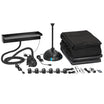
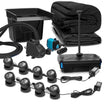
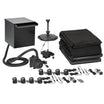
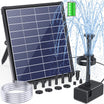
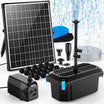
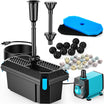
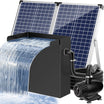
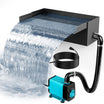

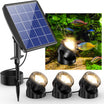
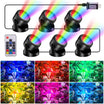

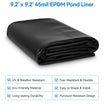
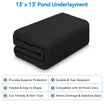

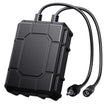
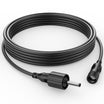
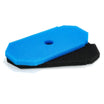
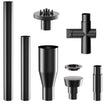
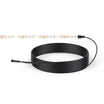
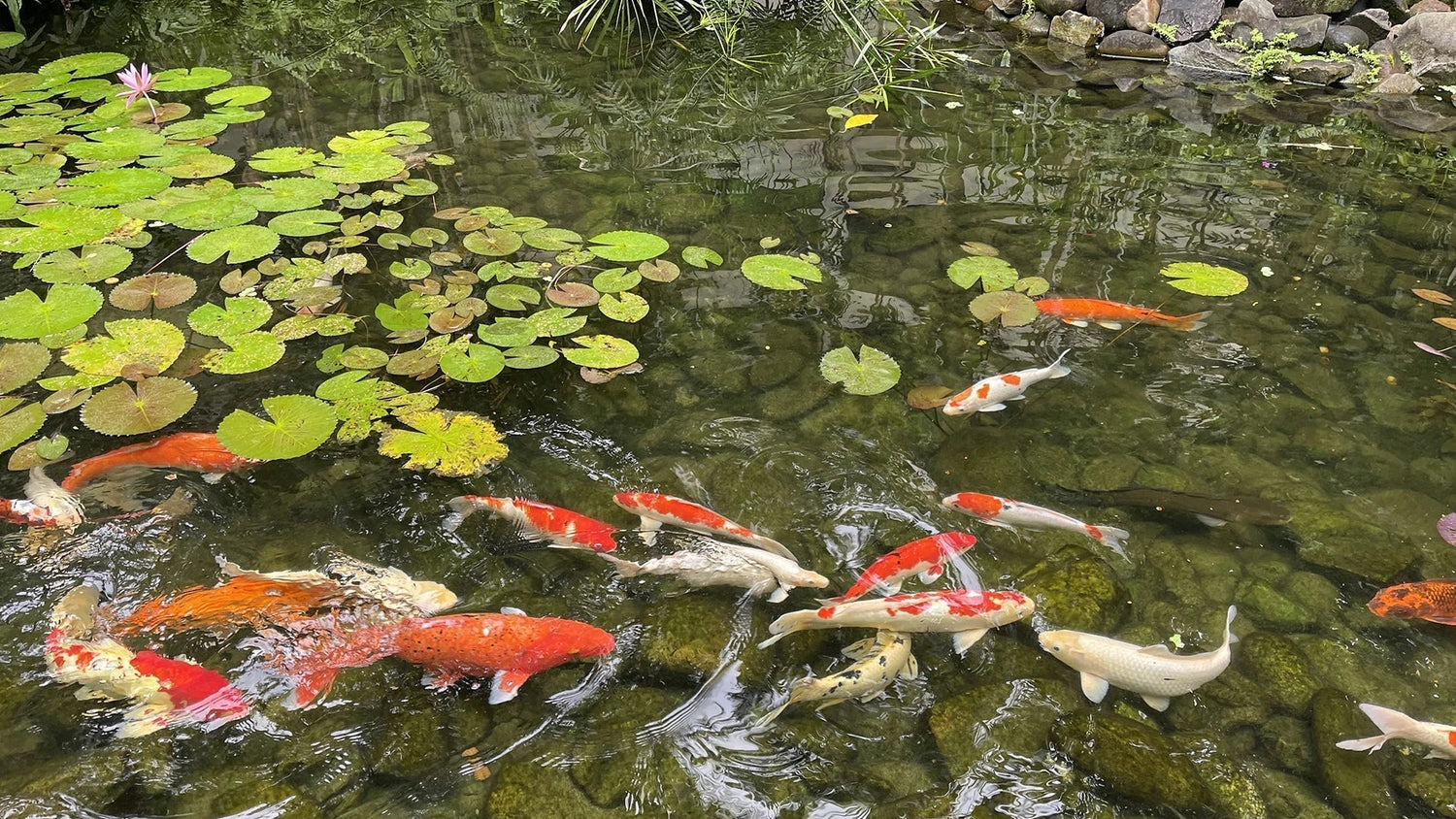


Laisser un commentaire
Tous les commentaires sont modérés avant d'être publiés.
Ce site est protégé par hCaptcha, et la Politique de confidentialité et les Conditions de service de hCaptcha s’appliquent.